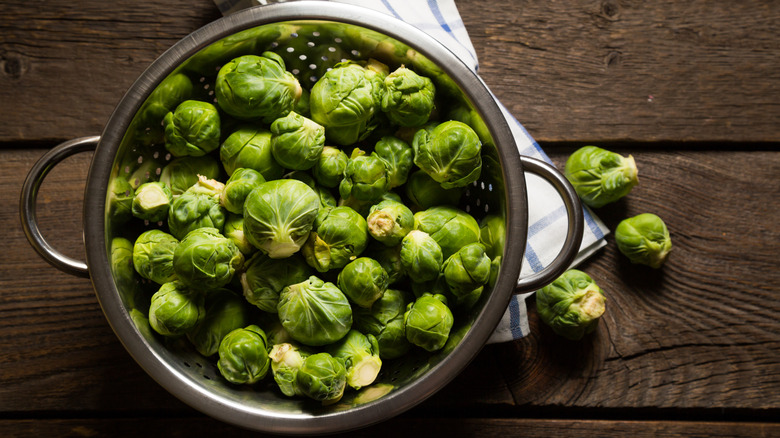Cleaning Brussels Sprouts Is Easier Than You Might Expect
Today, we're long past the point where Brussels sprouts conjure images of mushy, boiled veggies that your mom forced you to eat. Now we smash them for ultra-crispy results, we air fry them in a honey-balsamic glaze, and we sauté them to make a vibrant side dish. But before you get to cooking, it's important to know how to clean Brussels sprouts properly. According to the Centers for Disease Control and Prevention (CDC), raw vegetables can sometimes contain bacteria that can give you Salmonella, E. coli, and Listeria. Especially since fresh Brussels sprouts have so many layers (perfect for clinging onto dirt and germs), you'll want to give them a thorough washing before cooking.
But despite their many layers, cleaning them is easier than you might expect. Here's what to do: Trim off the ends (the little knobby white parts), then rinse them under cold water in a bowl in the sink. This method aligns with the CDC's recommendations to wash vegetables under running water, and you'll allow any of the gross stuff to fall to the bottom of the bowl. Then give them another pass under cold water in a colander and dry them with a paper towel.
How to clean and prepare Brussels sprouts for cooking
Before you run your sprouts under cold water, you may want to take a closer look at their layers to make sure they're in good condition — they should be green and taut. If you see any leaves that are brown or falling off, remove them and throw them away, although you shouldn't have to peel your veggies fully. Then when you toss what remains in a bowl with cold water, let them sit there for a few minutes to give any dirt time to wash away before transferring to a colander. And use cold water, not hot — the heat might cause the leaves to wilt, or push bacteria further in between the layers of the veggies.
Once your Brussels sprouts are squeaky clean, make sure to properly dry them to avoid any mold growth in the fridge. Plus, if you were to roast or sauté wet sprouts, they'd steam instead of developing that crispy outer layer. If you'd rather not pat them dry with a paper towel, you can also throw them in a salad spinner to shake away any excess moisture. Seal them in an airtight container (like a plastic bag) and store them in the fridge, where they'll be good for up to two days. You'll have clean, ready-to-cook veggies after only a few minutes of prep time.

